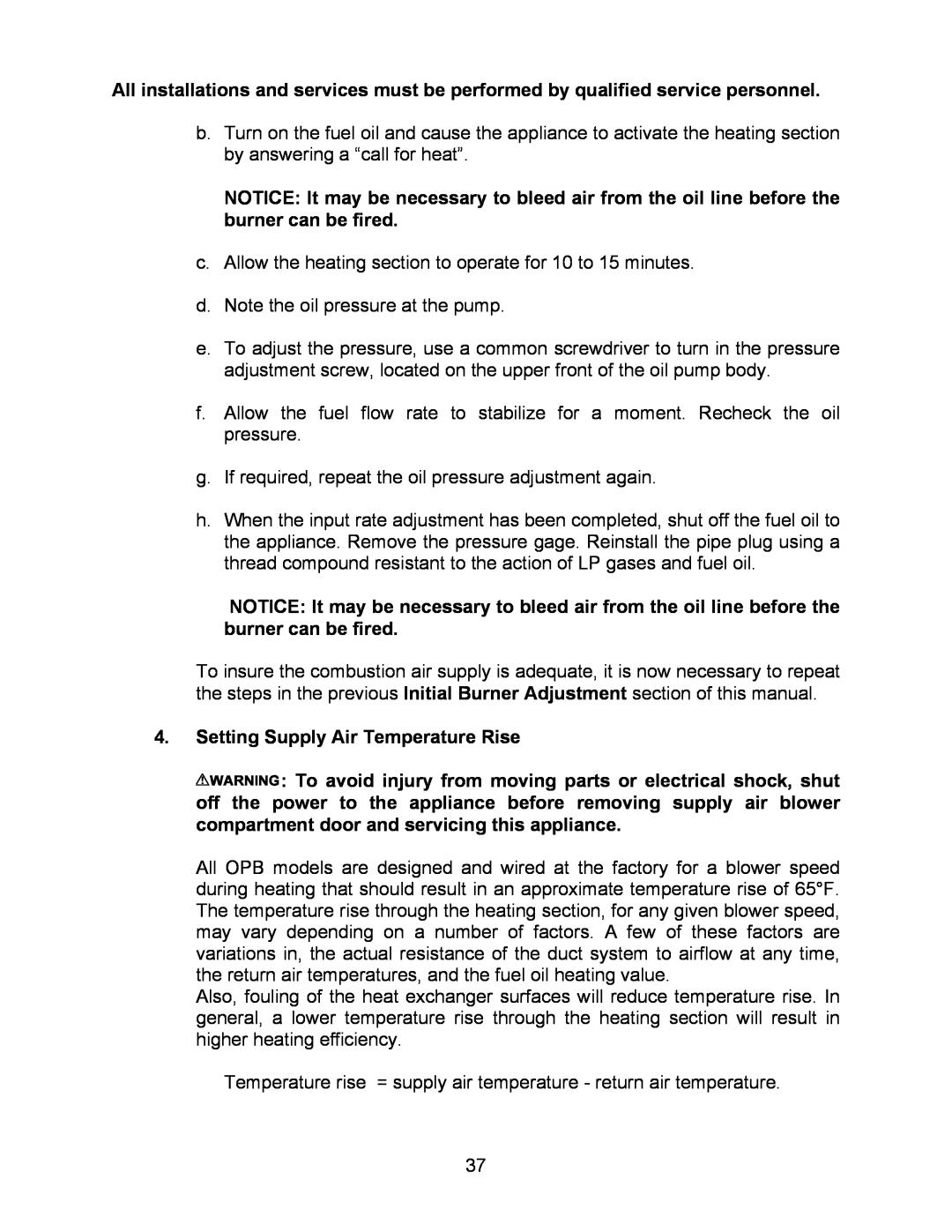All installations and services must be performed by qualified service personnel.
b.Turn on the fuel oil and cause the appliance to activate the heating section by answering a “call for heat”.
NOTICE: It may be necessary to bleed air from the oil line before the burner can be fired.
c.Allow the heating section to operate for 10 to 15 minutes.
d.Note the oil pressure at the pump.
e.To adjust the pressure, use a common screwdriver to turn in the pressure adjustment screw, located on the upper front of the oil pump body.
f.Allow the fuel flow rate to stabilize for a moment. Recheck the oil pressure.
g.If required, repeat the oil pressure adjustment again.
h.When the input rate adjustment has been completed, shut off the fuel oil to the appliance. Remove the pressure gage. Reinstall the pipe plug using a thread compound resistant to the action of LP gases and fuel oil.
NOTICE: It may be necessary to bleed air from the oil line before the burner can be fired.
To insure the combustion air supply is adequate, it is now necessary to repeat the steps in the previous Initial Burner Adjustment section of this manual.
4.Setting Supply Air Temperature Rise
![]()
![]()
![]()
![]()
![]()
![]()
![]()
![]()
![]()
![]()
![]()
![]()
![]()
![]()
![]()
![]()
![]() : To avoid injury from moving parts or electrical shock, shut off the power to the appliance before removing supply air blower compartment door and servicing this appliance.
: To avoid injury from moving parts or electrical shock, shut off the power to the appliance before removing supply air blower compartment door and servicing this appliance.
All OPB models are designed and wired at the factory for a blower speed during heating that should result in an approximate temperature rise of 65°F. The temperature rise through the heating section, for any given blower speed, may vary depending on a number of factors. A few of these factors are variations in, the actual resistance of the duct system to airflow at any time, the return air temperatures, and the fuel oil heating value.
Also, fouling of the heat exchanger surfaces will reduce temperature rise. In general, a lower temperature rise through the heating section will result in higher heating efficiency.
Temperature rise = supply air temperature - return air temperature.
37
